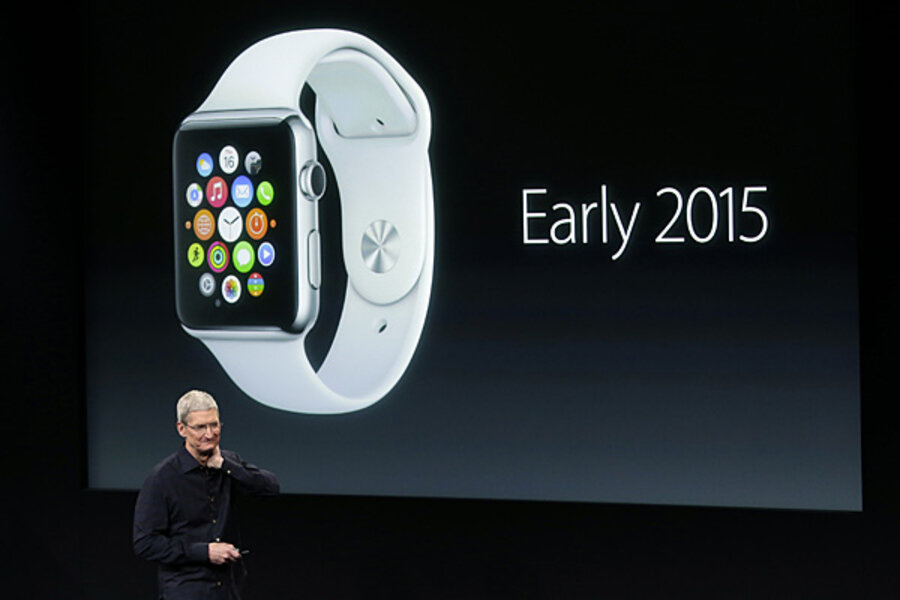Apple Watch to be released in the spring
Loading...
There is a lot of anticipation around Apple Watch, the company's first wearable device. It's predicted to shakeup the wearable technology industry. But since the company released the Apple Watch on Sept. 9, Apple has only said it was coming out in early 2015.
Now, thanks to a reportedly leaked memo to 9to5Mac, we have a better idea as to when the technology might be available in stores. In a video address to employees, Angela Ahrendts, Apple's senior vice president of retail and online stores, said the Apple Watch would be launched after the Chinese New Year, which is on Feb. 19. That is later than originally anticipated.
“We’re going into the holidays, we’ll go into Chinese New Year, and then we’ve got a new watch launch coming in the spring,” Ms. Ahrendts said, according to 9to5mac. The Christian Science Monitor could not independently verify the document.
Apple Watch is Apple's first wearable device. The sleek watch is built to be a companion with an iPhone. Apple wants the watch to be something different, not just an iPhone on your wrist. The Apple Watch will be connected to Apple Pay, have Siri, and will have apps specifically developed for the technology. The watch will come in two sizes and three styles: Apple Watch, Apple Watch Sport, and Apple Watch Edition. One of the major selling point for the watch is its ability to track the users activity. Apple watch can track users activity through health apps and sensors in the back of the watch's interface. Apple Watch starts at $349.
"This isn’t the first ever smartwatch and it doesn’t really do anything other smart watches don’t do, but what it does do, it does better than the competition thanks to Apple’s user interface expertise," wrote Karen Haslam of Macworld. "Apple has paid an enormous amount of attention to every last detail of this watch and it shows."
The wearable tech industry is growing. In 2013, the wearable tech market was worth $1 billion, but its expected to be worth $37 billion by 2020, according to the research firm Strategy Analytics. Other companies have released their own version of wearable technology. In early September, Sony introduced its SmartWatch 3, which it isn't available yet. Fitbit, a wearable fitness tracker, created the most popular wearable tech devices. Of the 2.7 million wearable devices shipped worldwide in the first quarter of 2014, 50 percent of them were Fitbits, according to research firm Canalyst.
Though Apple is entering the wearable tech market late, its entry into the market could be a catalyst for making wearable devices widely popular.
"Apple will legitimize and create the mass-market wearables category," J.P. Gownder, an analyst at Forester Research group, told CNN.






